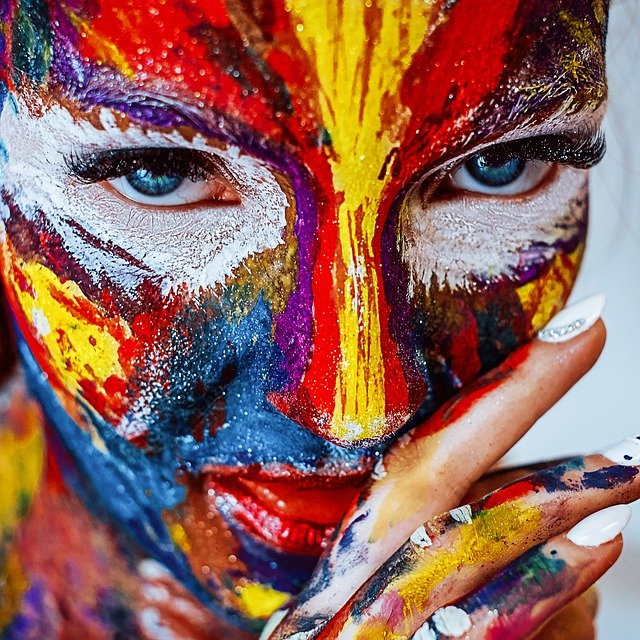

There are many categories of makeup artists who specialise in diverse fields or produce beauty looks for certain types of clients within the beauty industry and makeup design community. Each style of makeup artist has their own set of skills that help them succeed in their chosen profession and beauty genre. If you’re considering a makeup artist education or want to learn more about the different styles of makeup artists, you’ve come to the right spot. JD Institute Of Fashion Technology (which is one of the most prestigious institutes when it comes to art and creativity) has five different types of makeup artists for you to explore, but first, let us look at who is a makeup artist and the history behind it:
A makeup or makeup artist works with the human body to apply makeup and prosthetics to others for theatrical, advertising, video, fashion, magazines, and other related creations and all facets of the modeling industry. The Academy Award for Best Makeup and Hairstyling and film industry awards like the Emmy Awards and the Golden Globes are given for this career in the entertainment industry. In certain nations, agencies need specialised licenses before they can employ an MUA.
What would you say if I asked you who you thought was the first makeup artist ever painted a face? Can you say the first fashion shows were held in Paris in the 1800s? Perhaps much farther back in time, to Shakespeare’s rule over the Globe theatre in England in the 1500s? In fact, there is evidence that servants adorned the faces of wealthy Egyptian women with kohl and oils as far back as 5000 years ago. Makeup became a treat for the rich and royal over the years to accentuate their features.
The real original makeup artists were assistants to the rich, the wealthy themselves, or theatre performers who did much of their own makeup. Romans used chalk to whiten their faces to Victorian women using poisonous lethal nightshades to widen their eyes.
Makeup artistry continued to progress in leaps and bounds throughout the twentieth century, both in terms of growth and prestige as a discipline. This can be due to a number of other advancements that occurred over the century, such as fashion cinema and, most notably, feminism. By the 1920s, the film was all the rage, and makeup artists were in high demand to paint the actresses’ faces. With the middle class in America and more financially empowered women, makeup was no longer just for the wealthy, and many young women imitated the looks they saw on the red carpet; cupid’s bow lips and deeply kohlled eyes became the look of preference. Fashion shows became more common in the 1920s, and makeup artists were employed to produce looks for the models.
Makeup artists who work in the world of cinematic beauty create looks for television and movies. Makeup artists in the entertainment industry may work on television programs, applying makeup to actors and actresses, or in the press, applying makeup to on-air hosts or anchors. To work in these areas, you’ll typically need a combination of makeup skills, including simple makeup artistry skills for regular looks and special effects makeup skills whether you’re working on shows or films with fantasy, horror, or sci-fi elements.
The wedding industry is a very profitable area in makeup. In this field of fashion, makeup artists work for brides and bridal parties. You’ll need to be able to work one-on-one with brides to develop a unique look that suits their wedding style as well as their personal tastes. You must be eligible for appointments and precise dates in order to work in the cosmetics industry.
All major cosmetic firms and brands have in-house makeup artists who are in charge of marketing the brand and demonstrating individual items. Many who work in the beauty makeup industry often start out small, such as working in department stores or in lower-level jobs with makeup firms. They will advance in the cosmetics industry from there, and some even launch their own businesses.
Fashion makeup artists work in the fashion industry, creating looks for runway shows and photoshoots. You must be adaptable as a fashion makeup artist in order to collaborate with other fashion experts, such as designers or photographers, to realise a creative vision.
Some makeup artists’ work, including face and body painting, is a bit unusual. Using makeup and glitter, this style of visual effects artist makes fantastical, surreal, and cool looks on the human body.
If you want to become a makeup artist, the right kind of training plays a huge role for you to be successful or for you to get makeup artist jobs with a great makeup artist salary. JD Institute Of Fashion Technology is just the right place for you as it reflects a legacy of over 32 years in the field of art or creativity and offers various industry-based courses such as makeup artist course etc so that the students can face the real world with ease or can stand apart from the neck to neck competition that exists in these fields. Due to their exceptional contribution towards education and record-breaking placement rate of 99%, JD Institute reflects many awards such as the leaders in education award, international glory award, and many more. Enroll now!